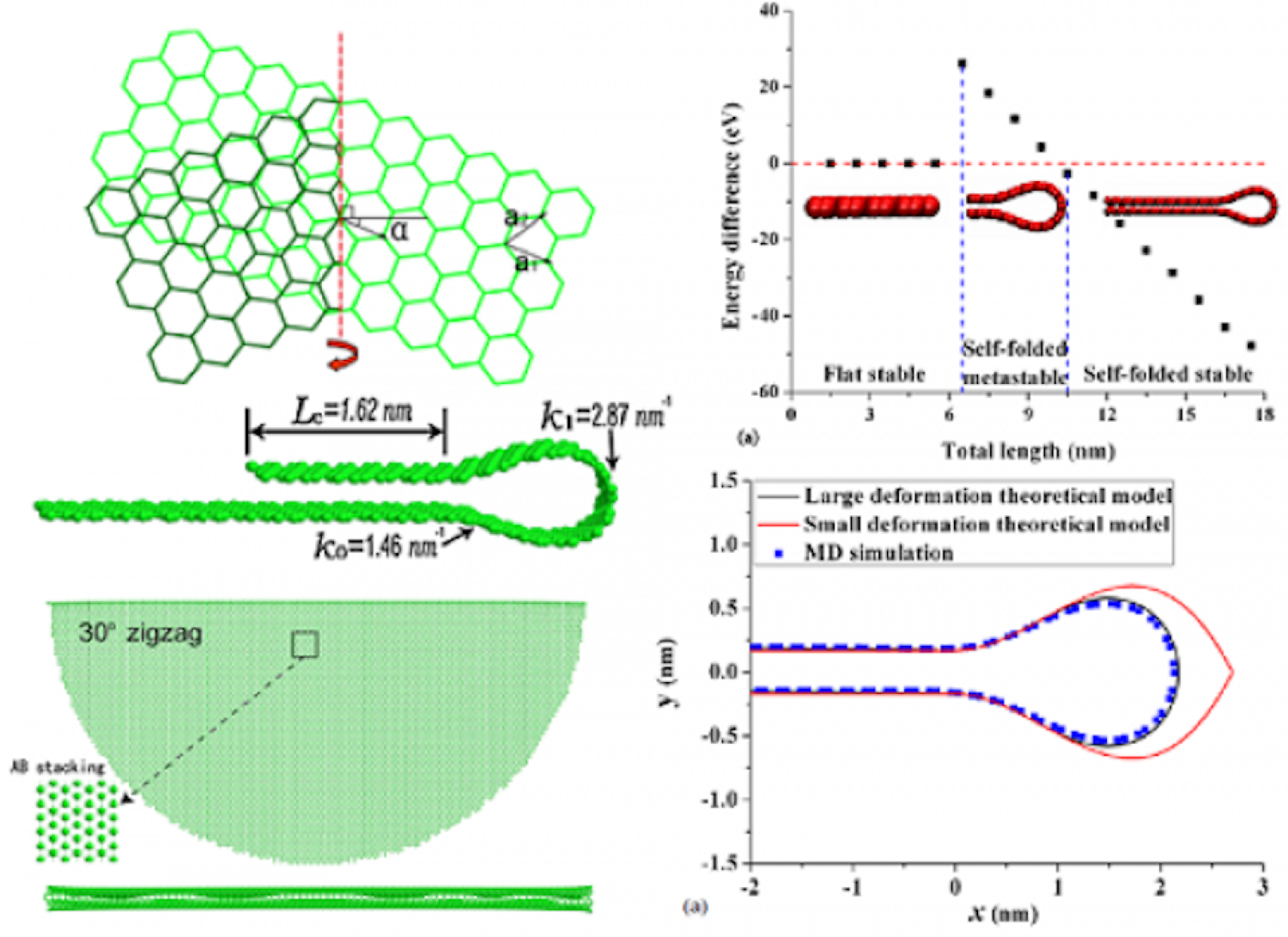Graphene, like a sheet of paper, folds under mechanical forces. The folded graphene edges can affect the electrical properties of graphenes. The stability of folded graphene, however, depends on the folding direction and the resulted graphene stacking. Suspended graphene in liquids folds freely under random ultrasonic stimulations. We determined the structure of ~100 folded graphene edges by electron nanodiffraction. About 1/3 are armchair and 1/3 are zigzag. The results are explained by the energetics of graphene folding and atomic simulation. The zigzag edge has AB stacking, while in the armchair edge, AB stacking is achieved in some areas by a small twist. An analytical model based on finite deformation mechanics was also developed to accurately describe the shapes of folded edges.
References:
J. Zhang, J. Xiao, X. Meng, C. Monroe, Y. Huang, and J.-M. Zuo, Free Folding of Suspended Graphene Sheets by Random Mechanical Stimulation, Physical Review Letters 104, 166805 (2010)
X. Meng, M. Li*, Z. Kang, X. Zhang, J. Xiao*, Mechanics of Self-Folding of Single-layer Graphene, J. Phys. D: Appl. Phys. 46, 055308 (2013)


